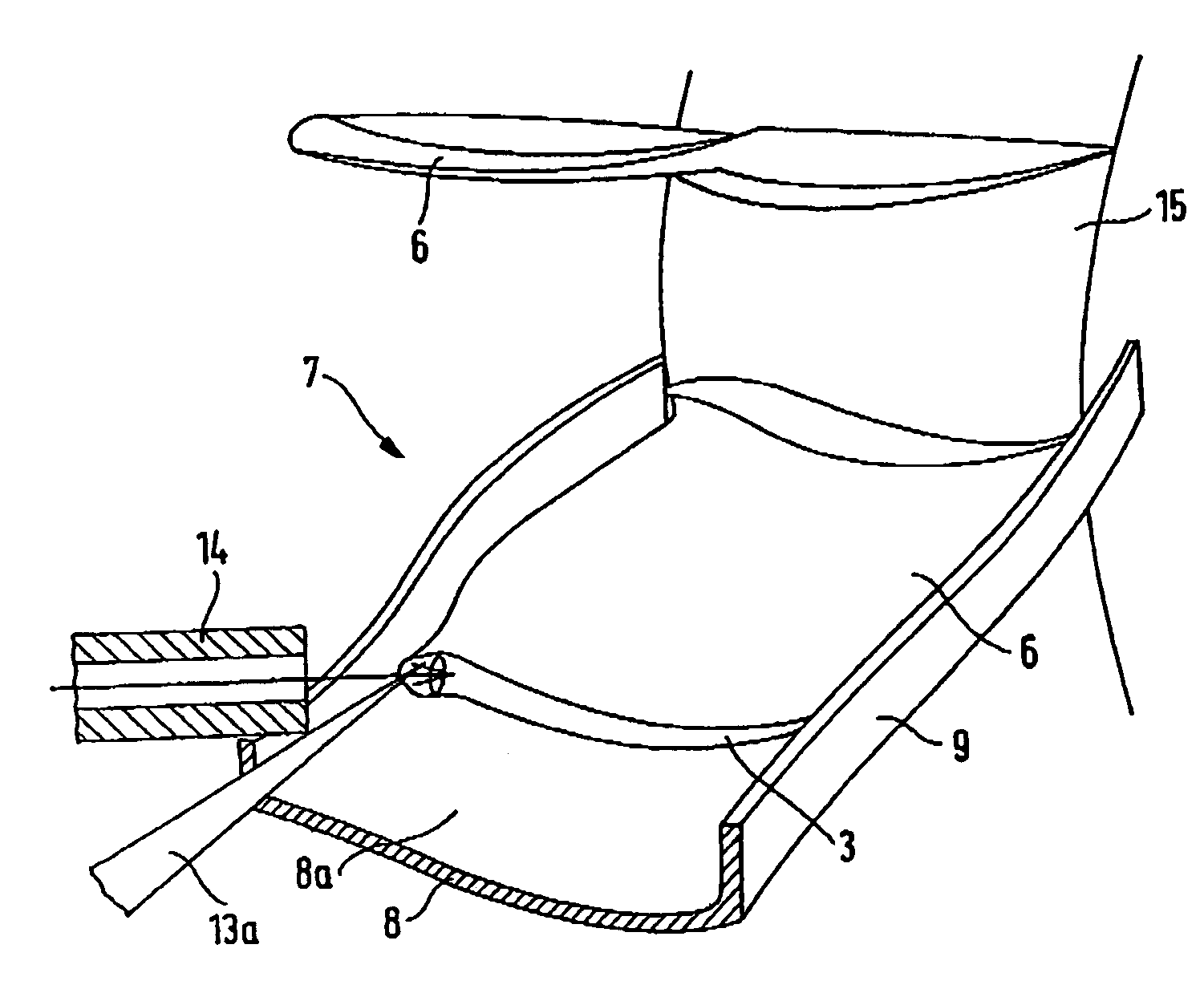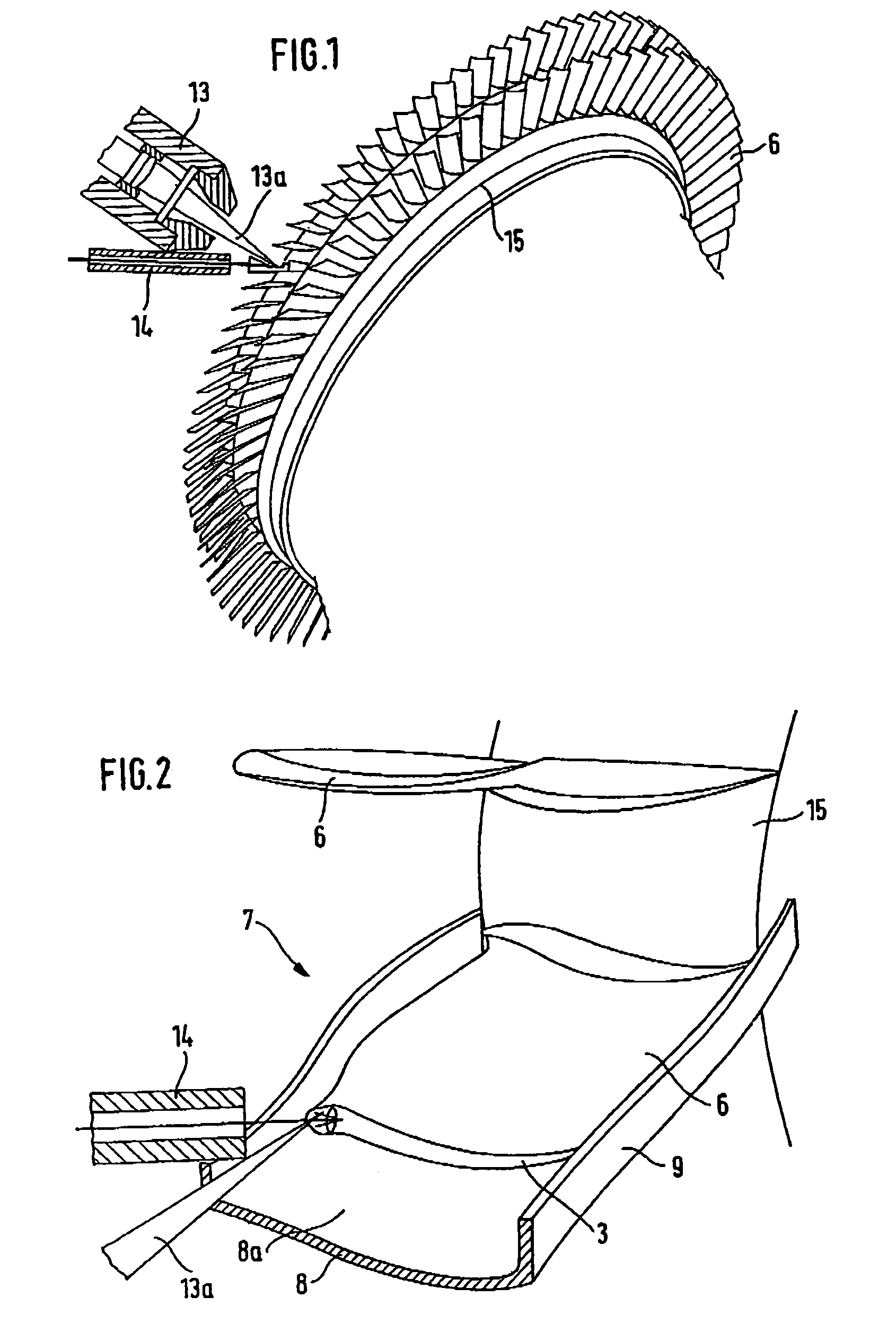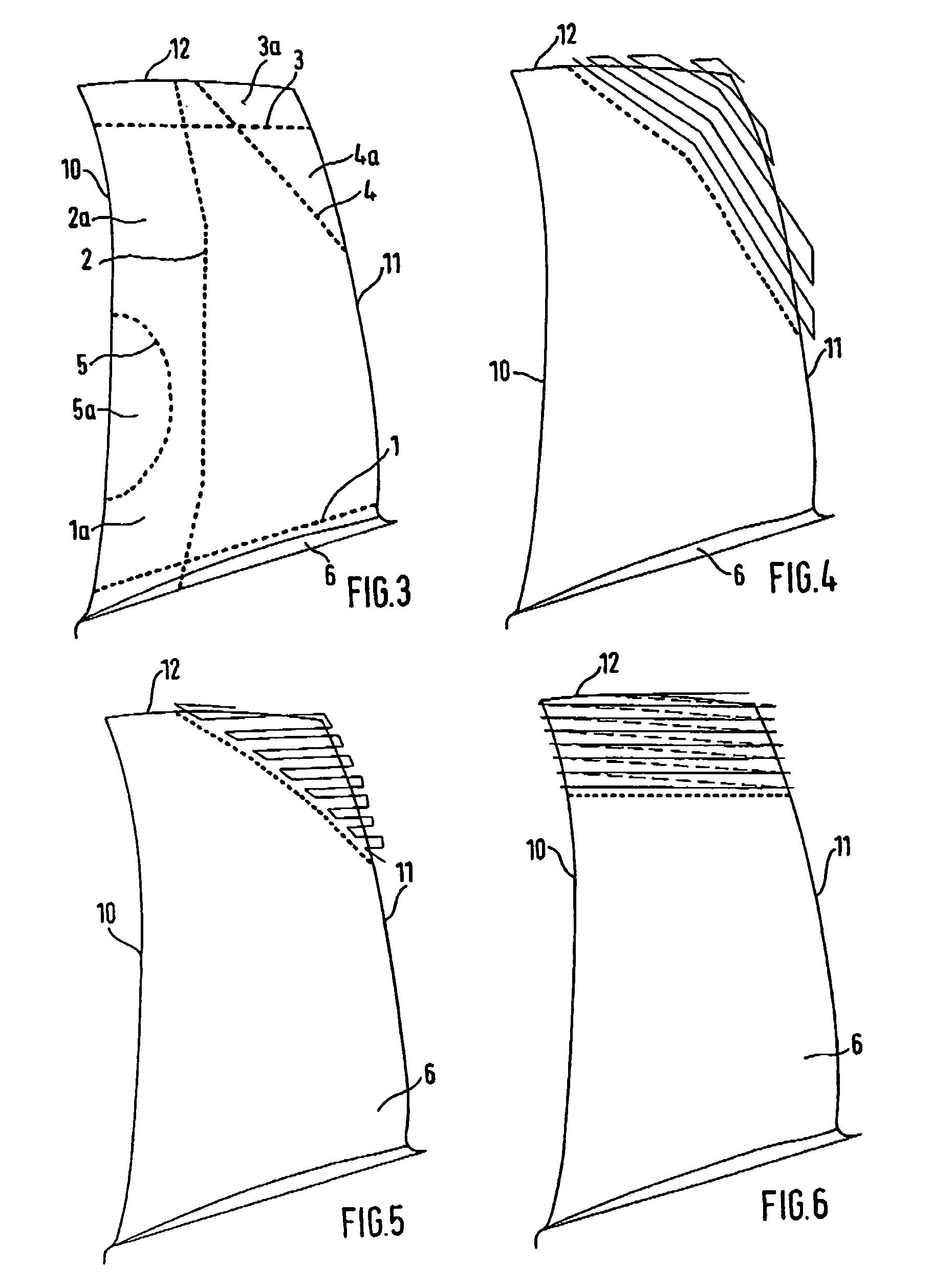Method for the restoration of damaged areal components
a technology for aircraft engines and compressor blades, which is applied in the direction of machines/engines, manufacturing tools, mechanical equipment, etc., can solve the problems of reducing affecting the service life of compressor blades, and prone to damage, so as to achieve low rework effort
- Summary
- Abstract
- Description
- Claims
- Application Information
AI Technical Summary
Benefits of technology
Problems solved by technology
Method used
Image
Examples
Embodiment Construction
[0019]In accordance with FIG. 3, the following primary cases of blade damage and restoration apply:[0020]1. The blade is unusable over its entire length and will, therefore, be separated at the blade root along line 1 and restored from this sectional plane.[0021]2. The blade is deformed at the leading edge. The damaged portion will be separated along line 2 and the blade restored from this sectional plane.[0022]3. The tip of the blade is, as usual, eroded by the effect of flow and will be repaired by build-up welding from line 3.[0023]4. The blade is worn in a corner area at the tip and trailing edge by an exceptionally high content of airborne particles and will be repaired from line 4.[0024]5. The blade is damaged by a foreign object in a limited area on the leading edge. The damaged area will be cut out along line 5 and the blade restored along this sectional plane.
[0025]Upon removal of the damaged portion 1a, 2a, 3a, 4a or 5a of the compressor blade 6 at the respective dotted li...
PUM
| Property | Measurement | Unit |
|---|---|---|
| pressure | aaaaa | aaaaa |
| thickness | aaaaa | aaaaa |
| size | aaaaa | aaaaa |
Abstract
Description
Claims
Application Information
 Login to View More
Login to View More - R&D
- Intellectual Property
- Life Sciences
- Materials
- Tech Scout
- Unparalleled Data Quality
- Higher Quality Content
- 60% Fewer Hallucinations
Browse by: Latest US Patents, China's latest patents, Technical Efficacy Thesaurus, Application Domain, Technology Topic, Popular Technical Reports.
© 2025 PatSnap. All rights reserved.Legal|Privacy policy|Modern Slavery Act Transparency Statement|Sitemap|About US| Contact US: help@patsnap.com



